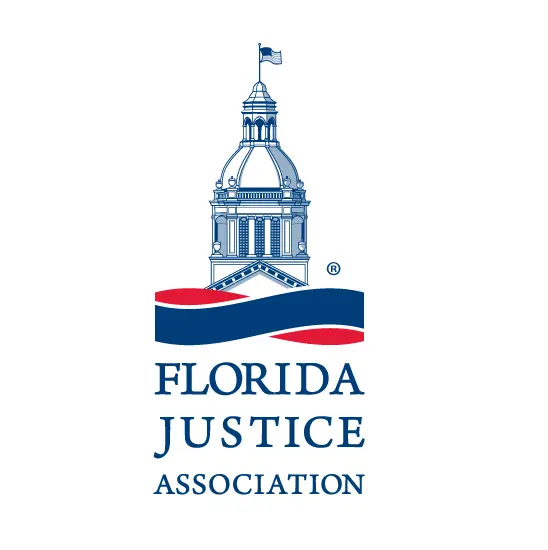
Spine injuries and head trauma are incredibly common after car accidents — and often very serious.
Injuries to the back, spine, head and neck are common after car accidents in Florida — partly because our bodies don’t absorb rapid changes in direction well.
Even a collision with a slow-moving vehicle shocks not only the back but the human brain. Injuries often mask internal injuries and are not diagnosed until after emergency injuries are treated.
Back and spine injuries can permanently disable you, keep you out of work, or make it impossible to return to your present job.
An experienced auto accident attorney can make sure you get the compensation you deserve for any type of back or head injury.
Types of head injuries
Concussions
Concussions frequently result from the jarring of the human brain within the skull as a result of a sudden change in the motion of the human body. Concussions can be mild to severe with temporary loss of brain function. A concussion can cause you to lose consciousness with possible bruising, bleeding or swelling within the brain.
Traumatic brain injury (TBI)
The human skull is thin and easily permeated upon collision. Brain structures may be torn by a fractured skull. Open head injuries damage the Dura mater and the meninges. Torn brain tissue or damaged nerves interfere with the release of neurotransmitters within the brain.
Traumatic brain injuries can affect a person’s:
- Memory
- Learning
- Reasoning
- Judgment
- Focus or concentration
Coup-contrecoup injuries
Coup-contrecoup injuries are contusions, bruises or blood in your brain where your brain hit your skull and directly opposite to that point.
Closed head injuries
Closed head injuries can cause intracranial pressure, subdural hematomas, ischemic brain damage, edema, aneurysms and hypoxia.
Facial injuries
Facial injuries during a car accident often result from hitting the steering wheel, dashboard, windshield, side window, car seat or broken glass. Bruises and cuts may hide a larger laceration, a broken jaw or another dental injury. Facial injuries can be minor, or your facial injury can conceal an open or closed head injury.
Types of back injuries
Cervical spine injuries
Neck injuries may be mild neck strain or sprain from whiplash or more serious dislocated vertebrae or damaged vertebral discs.
Traumatic brain injuries result from cervical spine injuries which can cause cranial nerve damage. Cranial nerve damage can paralyze your face, alter your vision, keep sensations from reaching your brain, make you dizzy, or make it difficult for you to breathe and speak.
Traumatic brain injuries are not visible nor are they easy to diagnose.
Thoracic spine injuries
Injuries to the thoracic spine result from high impact car accidents. For example, a car stopped, while driving through a construction site, struck in the rear by a fast moving car changing lanes can break thoracic vertebrae.
Discs separate your vertebrae and cushion the shock. Discs herniated as a result of your accident put pressure on your spinal cord and the nerves attached to your vertebrae. Thoracic vertebrae in the upper back connect to your ribs and chest. Fractures, sprains and strains in this spinal section are dangerous and easily result in permanent nerve damage.
Lumbar injuries
Lumbar injuries may not be noticed until days or weeks after your accident. The lumbar vertebrae are your five largest spinal vertebrae.
A lumbar sprain or strain is extremely painful because the muscles attached to them are your strongest spinal muscles. A lumbar sprain damages your ligaments, tendons and muscles.
Mild lumbar injuries interfere with your daily life. They restrict your ability to move, swell and bruise. Severe lumbar injuries include herniated discs, fractured vertebrae, and spinal cord injuries.
Spinal cord injuries
Sudden severe back pain can numb your arms and legs. Your spinal cord can be damaged or cut by bone fragments or compressed by herniated discs. Your torn or bruised ligaments can damage your spinal cord and destroy axons which interferes with the transmission of signals through your spinal cord to and from the body and the brain.
Spinal cord injuries result in a loss of sensation or the loss of motor functions. A spinal cord injury in the lumbar area makes it impossible for you to stand or walk.
Internal injuries
Back injuries can cause internal injuries which include internal bleeding, ruptured bowels or spleen, or injured kidneys and lungs. Fractured ribs can puncture your lungs and heart. Injuries to your heart or aorta from back injuries are life threatening and must be immediately treated by emergency medical personnel.
Psychological injuries
Drivers and passengers seriously injured in a car accident also tend to suffer short or long-term psychological effects. Surviving an accident which killed a loved one is particularly upsetting and can lead to anxiety, depression and posttraumatic stress disorder (PTSD). Less severe traffic accidents can still cause emotional distress and may have long-term effects on the accident victims.
If you’ve been in a car accident, you should seek treatment from a medical professional as soon as possible. Not all serious injuries are immediately apparent. Afterwards, consider meeting with an attorney to discuss your legal rights to financial recovery.






